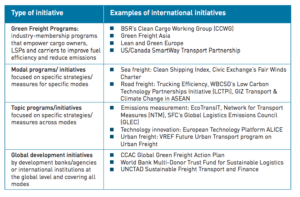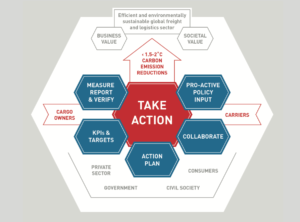Smart or green freight refers to the transformation efforts of the freight and logistics sector that help reduce greenhouse gas emissions and air pollutants and improve fuel efficiency across the global logistics supply chain, whilst maintaining competitiveness and economic growth. Smart freight, green freight and sustainable freight/logistics are in practice used interchangeably.
Despite proven economic drivers for smarter freight and potential for improvement, there is not a change at a global scale yet. The good news is that momentum for action on smarter freight is growing, witnessed by growing government and industry initiatives, technology innovation and research programs. A clear understanding of key actors in smart freight is an essential first step to achieving transformational change and emission reductions at scale.
To that end, SFC developed an online map of programs and initiatives, industry associations and leading international institutes – the “World of Smart Freight” – which will be expanded and updated in time.
Smart Freight initiatives
There is a vast and growing number of initiatives, that can have a broader environmental or sustainability focus. In addition to initiatives, there are various partnerships that touch on green freight as part of broader transport and climate issues.
SFC’s “Smart Freight Leadership” report explains the journey along the five central elements that define leadership. This report is for leaders, and especially business leaders, who believe that a more efficient freight and logistics sector goes hand in hand with greater competitiveness and environmental sustainability.
SFC developed the Smart Freight Leadership Framework to create a common approach for what is needed for government, the private sector and civil society to deliver the vision, and achieve the desired transformational change and emission reductions at scale.
To ensure that actions collectively realise significant emission reductions, Smart Freight Leaders:
- Measure, report and verify emissions
- Set KPIs and ambitious emission-reduction targets
- Develop and implement an action plan
- Collaborate with other leaders to mobilize industry-wide action
- Engage pro-actively in government policy development.
Source: Smart Freight Centre


